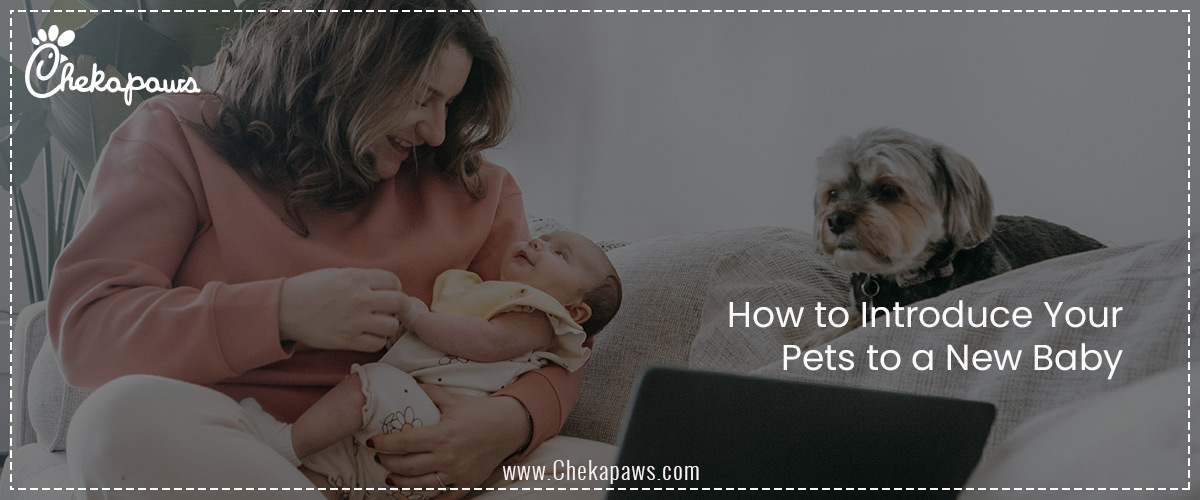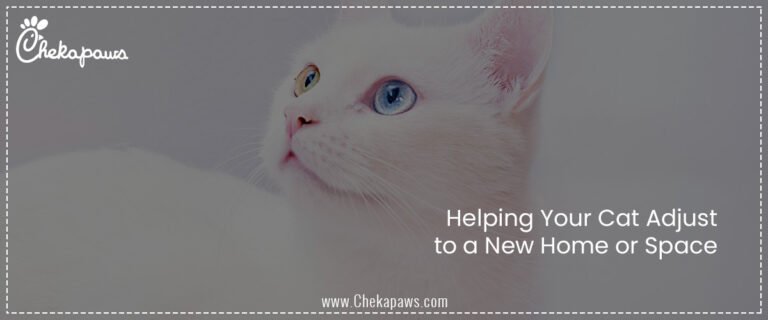Having a new baby in your home is an exciting and amazing experience. However, if you have pets, the move can be difficult. Ensure a pleasant introduction between your pet and the infant with careful planning and patience. This article will go over several processes and strategies for helping your pet adjust to the new family member, resulting in a harmonious and safe environment for everyone.
Table of Contents
Understanding Your Pet’s Perspective
Before the baby arrives, you must understand how your pet sees the household and new developments. Pets, whether dogs, cats, or other animals, benefit from routine and familiarity. Any rapid shift can lead to worry and anxiety. Recognizing their behavioral patterns and any concerns will aid in preparing them for the baby’s birth.
Signs of Stress in Pets
- Dogs exhibit excessive barking, destructive behavior, loss of appetite, clinginess, or hiding.
- Cats may hide, spray, groom excessively, shun human contact, or exhibit aggressive behavior.
- Other pets may exhibit changes in eating patterns, aggressiveness, excessive vocalization, or decreased activity.
Understanding these warning signs can enable you to handle problems before they develop.
Preparing Your Pet Before the Baby Arrives
Preparation is essential for a successful introduction. The measures listed below will assist your pet in adjusting to the future changes.
Establish New Routines Early
- Gradually change your pet’s feeding and walking schedule to match the baby’s expected routine.
- Change sleeping arrangements as needed (for example, keeping cats out of the nursery).
- Reduce your attention to your pet gradually so that they do not identify the infant with a sudden lack of affection.
Exposure to Baby-Related Sounds and Smells
- Play recordings of baby noises like crying, cooing and laughter at a low volume and gradually raise it.
- Allow your pet to look at baby goods such as toys, cribs, and strollers.
- To get your pet used to different odors, apply baby lotion or powder on your skin.
Reinforce Basic Training (For Dogs)
- Teach the basic obedience commands “sit,” “stay,” “leave it,” and “gentle.”
- If you want to walk them while using a stroller, be sure they respond well to leash training.
Creating a Safe Space
- Create a calm, welcoming space where your pet can retreat if they become overwhelmed.
- Ensure that your pet has access to their preferred toys, bedding, and food in their designated safe zone.
The First Introduction: Bringing the Baby Home
The first connection between your pet and the infant is critical. Follow these tips for a seamless introduction:
Step-by-Step Introduction
Come Home Calmly
- Greet your pet carefully and give them time to adjust to your return before introducing the infant.
- Ensure that your pet is not unduly eager or anxious.
- Allow Your Pet to Sniff Baby Items
- Allow your pet to sniff a blanket or clothing item with the baby’s scent before meeting in person.
Controlled First Meeting
- Keep dogs on a leash for the first meeting.
- Hold the baby strongly while allowing your pet to sniff at a safe distance.
- Maintain a calm and comforting attitude to avoid tension.
- Closely monitor reactions.
- Reward calm behaviour with treats and praise.
- If your pet exhibits stress or aggressiveness, calmly remove them and try again later.
Establishing Long-Term Harmony
- Supervising interactions
- Never leave your pet and newborn alone together, especially during the early months.
- Check interactions for indicators of stress or discomfort.
- Set boundaries with pet gates or playpens to guarantee safety.
- Maintaining a routine
- Continue to show your pet attention and playfulness to avoid feelings of neglect.
- Maintain a consistent feeding and exercise plan.
Teaching Your Baby to Respect Pets
- As your child grows, teach them to be kind with pets.
- Show them how to pet animals without pulling their fur or tails.
- Encourage respect for your pet’s space and boundaries
Addressing Behavioral Issues
Without planning, some pets may struggle with the new adjustments. If your pet is exhibiting behavioural concerns, examine the following:
- Increase exercise and mental stimulation.
- Use relaxing products like pheromone diffusers or anxiety wraps.
- Consult a veterinarian, trainer, or animal behaviorist if necessary.
Special Considerations for Different Pets
Dogs
Some breeds have a stronger protective instinct, while others may be more anxious. Adjust your approach based on your dog’s temperament. Large dogs should be trained to move carefully around the baby.
Cats
Cats may become territorial, provide vertical spaces like cat trees for them to retreat. Ensure litter boxes are kept clean and in a safe location away from the baby.
Small Pets (Rabbits, Birds, Reptiles)
Keep cages and enclosures secure and out of the baby’s reach. Ensure your pet has a quiet, stress-free environment.
Conclusion
Introducing your pet to a new baby takes time, preparation, and care. You can provide a safe and caring environment for both your pet and your child by planning ahead of time, encouraging positive behavior, and sticking to routines. With time, your pet can develop into an excellent companion for your newborn, building a lifelong link of friendship and affection.







